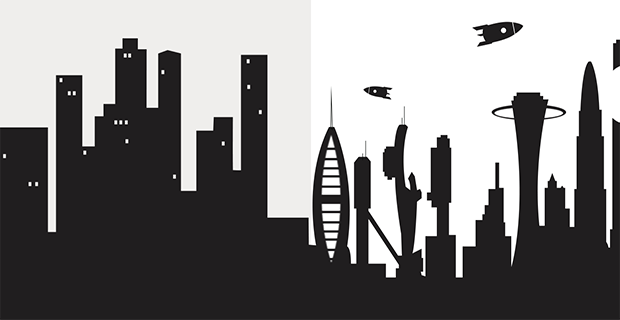
This week Max talks about how we’re future-proofing technology at Boise State. By moving our core systems to the Cloud, we can avoid costly large-scale upgrades every few years and continue to sustain our technologies over time:
Transcript
Hi, this is Max Davis Johnson, Boise State University, Office of Information Technology.
Today I want to talk a little bit about future-proofing technology. That’s one of the core tenets, one of our core drivers, as we look to the future when we think strategically about where we want to be.
From a University perspective, we have a lot of strategic overarching things that we have to deal with. And that can be things like funding, it can be the changing nature of research, it can be the changing nature of our student population. And there are social pressures. Political pressures.
And another big pressure we have is the fact that technology is constantly changing. Boise State invests a lot of money in technology. So, we have to make sure we’re investing in the right technology, and we have to think in terms of how can we sustain this technology?
How can we make this technology last? We want to future-proof our technology as much as we can.
Moving to the Cloud with our core systems means that our systems stay current. Every six months or so in the Cloud you get a new release, and bingo! When the time comes you accept the changes and you’re current on your core system. And that’s the way it should be.
And granted, we’ll have to understand what those changes are, we may have to modify some processes, but in general terms we’ll just accept these new changes and we’ll adapt and we’ll move on.
And this, as we move forward, will not just be for Finance, it will be for our HCM, eventually it will be for our student system too as that moves to the Cloud. But there’s other things we look at to future-proof our technology.
We embrace very heavily the Concept of One. And the idea there is that we have basically the same technology available to us doing the same thing. For instance, we’ve standardized on technology in the classroom. So, as technology changes there, which we know it will, we’ll be able to adapt more seamlessly because we will only have one way to move as those types of changes go in place.
We’re a very virtualized infrastructure, which means we’re very scalable, very flexible, but it’s all the same. And it’s the same infrastructure that is used in the Cloud. And so over time as we move things to the Cloud, it’s going to be the same thing as what we’re doing now here on premises.
So again, we’re looking to future-proof our infrastructure there.
When we hire people we’re very deliberate about hiring people that maybe have the current technical skills we have, but we’re very deliberate about making sure that they can change and adapt as technology changes. Because we all know, and we have to accept, that technically is going to change. And so we have to set up our culture, and that starts with hiring the people that understand that, yes, we’re going to have to learn new things two or three years from now.
But as we adopt new technology, we have to make sure that it’s going to be…I don’t want to say ‘the winner’…but we have to give it a chance that this new technology is getting broad support, that it is going to have a future as we move forward.
There’s new technology coming all the time, and even though sometimes it’s attractive to be on the bleeding edge, we want to make sure that as we move in a new direction with technology that it does have some mass behind it, other people are adopting it, and we feel confident that it will be an emerging standard, an emerging technology, an emerging direction.
So, like I said, at the end of the day we try to think very strategically as we move forward, as we look at new things…we invest as Boise State…we invest a lot of time, energy, money, not only OIT but the University…in technology, new processes, new methods, and we have to make sure that we future-proof this as best we can.
So, anyway, thank you for listening, and until next time. Bye.
Contact Max
Feedback is welcome and encouraged. Email max@boisestate.edu.
